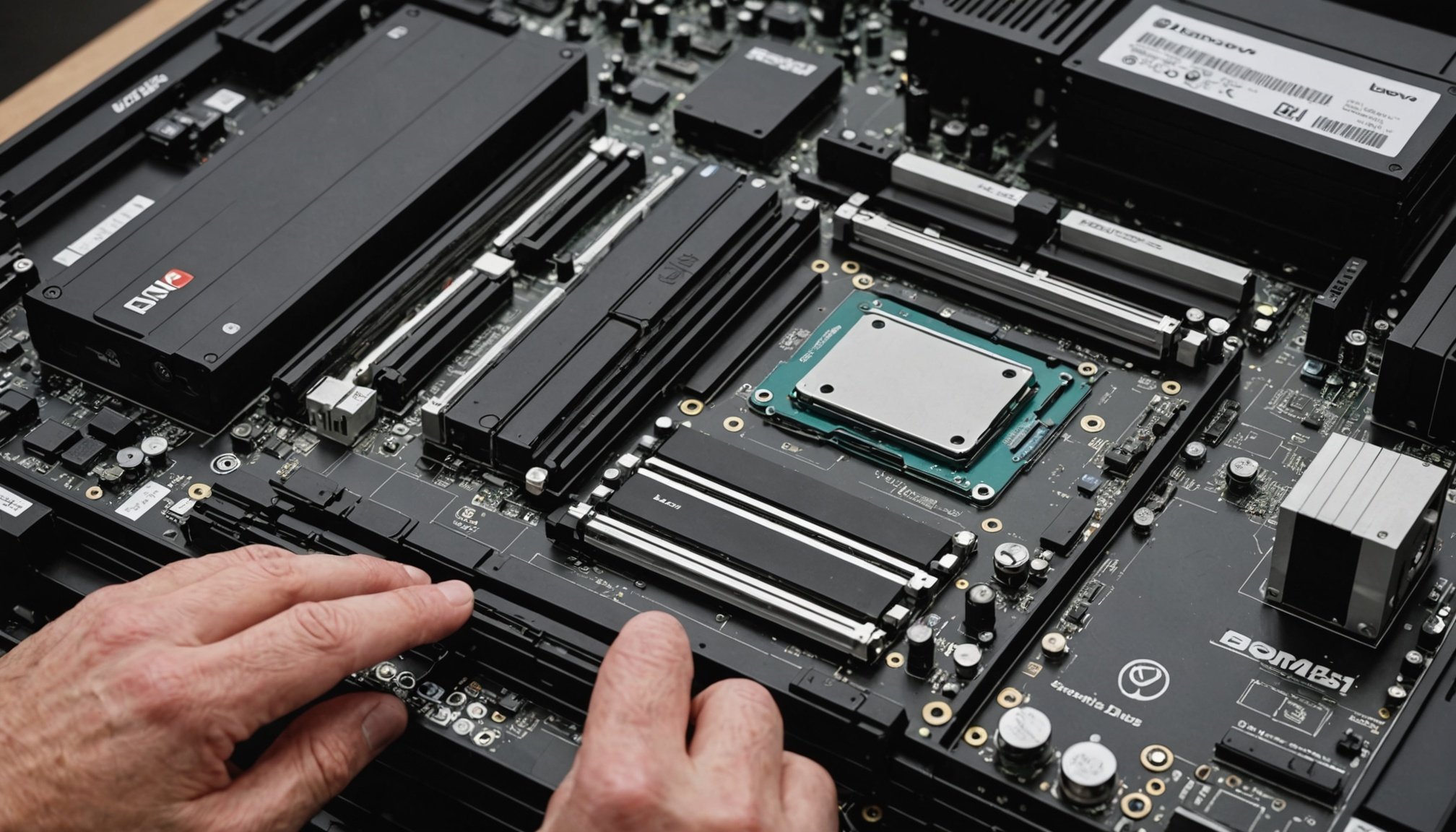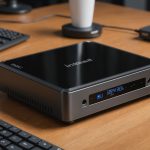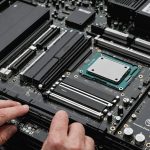Ultimate Guide to RAM Upgrades: A Comprehensive Installation and Setup Process for Your Lenovo ThinkStation P620
Why Upgrade Your RAM?
When it comes to enhancing the performance of your Lenovo ThinkStation P620, one of the most effective and straightforward upgrades you can make is to increase the RAM. The ThinkStation P620, powered by the AMD Ryzen Threadripper Pro 5945WX, is a powerhouse designed for demanding tasks such as video editing, data science, and other multi-threaded applications. However, even with its impressive specifications, adding more RAM can significantly boost your system’s capabilities.
“RAM is the backbone of any computer system, especially for workstations like the ThinkStation P620. It allows your system to handle more tasks simultaneously, reducing lag and increasing overall efficiency,” says a Lenovo technical support specialist.
Also to read : Achieve Flawless 4K Streaming: Essential Firmware Enhancements for Your Intel NUC 8
Understanding Your Lenovo ThinkStation P620’s RAM Configuration
Before you start the upgrade process, it’s crucial to understand the current RAM configuration of your ThinkStation P620.
- Standard Memory: The base model of the ThinkStation P620 comes with 32 GB of RAM, which is a good starting point but can be expanded to meet more demanding needs[1].
- RAM Type: The ThinkStation P620 supports DDR4 memory modules. Specifically, it uses ECC RDIMM memory, which provides error correction and is essential for professional and enterprise environments[5].
- RAM Slots: The system has multiple RAM slots available, allowing you to add more RAM modules. The exact number of slots can vary, but typically, you’ll find 8 or more slots in a ThinkStation P620.
Choosing the Right RAM Modules
When selecting new RAM modules for your upgrade, several factors need to be considered:
Also to discover : The Complete DIY Handbook: Step-by-Step Guide to Building and Configuring Your Own FreeNAS Server from Scratch
Compatibility
Ensure the new RAM modules are compatible with your system. Here are some key points to check:
- Type: DDR4 ECC RDIMM
- Speed: 3200MHz or higher
- Capacity: Choose modules that match or exceed the existing capacity (e.g., 16GB, 32GB, 64GB)
Brand and Quality
Opt for reputable brands known for their reliability and performance. Lenovo itself offers certified RAM modules that are guaranteed to work seamlessly with your ThinkStation P620[5].
Quantity and Configuration
Decide how much RAM you need based on your usage:
- Dual Channel Configuration: For optimal performance, use RAM modules in pairs to take advantage of the dual-channel configuration.
- Total Capacity: Calculate the total amount of RAM you need. For example, if you want to upgrade from 32 GB to 64 GB, you would need two 32 GB modules.
Step-by-Step RAM Installation Guide
Upgrading the RAM on your Lenovo ThinkStation P620 is relatively straightforward, but it requires some care and attention to detail.
Preparation
- Ground Yourself: Static electricity can damage your components. Use an anti-static wrist strap or touch a grounded metal object to discharge static electricity.
- Shut Down Your System: Ensure your ThinkStation P620 is completely powered off.
- Unplug Power and Data Cables: Disconnect all power cords, USB cables, and other peripherals.
Opening the Case
- Remove the Side Panel: The ThinkStation P620 has a tool-free design for easy access. Simply press the release button and slide the side panel off.
- Locate the RAM Slots: Inside, you’ll find the RAM slots on the motherboard.
Installing the New RAM Modules
- Identify the Slots: Determine which slots are available and which configuration will give you the best performance (e.g., dual channel).
- Remove Existing Modules (if necessary): Gently pull out the existing RAM modules from their slots.
- Insert the New Modules:
- Align the notches on the RAM module with the tabs on the slot.
- Gently push the module into the slot until it clicks into place.
- Ensure the module is securely seated and the tabs are closed.
Reassembling Your System
- Replace the Side Panel: Put the side panel back on and secure it.
- Reconnect All Cables: Plug back in all the power cords, USB cables, and other peripherals.
Verifying the Upgrade
After the physical installation, it’s essential to verify that the new RAM is recognized by your system.
Booting Up
- Turn on your ThinkStation P620 and enter the BIOS settings (usually by pressing F1 or F2 during boot).
- Navigate to the memory section to ensure the new RAM is detected.
Operating System Verification
- Boot into your operating system (Windows 11 Pro, Ubuntu LTS, etc.).
- Open the Task Manager or System Information to verify the total RAM available.
Performance Benefits of a RAM Upgrade
Upgrading your RAM can have significant performance benefits, especially in resource-intensive tasks.
Video Editing
- With more RAM, video editing software like Adobe Premiere Pro or DaVinci Resolve can handle larger projects and more complex timelines without lagging.
- “Adding more RAM to our ThinkStation P620 has been a game-changer for our video editing team. It’s significantly reduced render times and improved overall workflow efficiency,” says a media production specialist.
Data Science
- Data science applications often require large datasets to be loaded into memory. More RAM ensures that these datasets can be processed quickly and efficiently.
- “For data science tasks, having ample RAM is crucial. It allows us to work with larger datasets and perform complex analyses without running out of memory,” explains a data scientist.
Additional Upgrades to Consider
While upgrading your RAM is a great start, there are other components you might consider upgrading to further enhance your system’s performance.
Graphics Card
- A high-performance graphics card like the NVIDIA GeForce RTX 3060Ti can significantly improve graphics rendering and compute tasks[1].
PCIe SSD
- Upgrading to a faster PCIe SSD can improve loading times and overall system responsiveness.
- “Switching to a PCIe SSD has made a huge difference in how quickly our applications load and how responsive the system feels,” notes a software developer.
Gigabit Ethernet
- Ensuring you have a reliable and fast network connection is crucial for data transfer and collaboration. A gigabit Ethernet card can provide stable and high-speed connectivity.
Practical Tips and Considerations
Here are some practical tips to keep in mind when upgrading your RAM and other components:
Compatibility Checks
- Always check the compatibility of new components with your existing system to avoid any potential issues.
Warranty and Support
- Be aware of the warranty implications when upgrading your system. Lenovo offers a 1-year warranty on their hardware, but third-party upgrades may not be covered[1].
Future-Proofing
- Consider future-proofing your system by choosing components that are likely to remain relevant for a longer period. For example, opting for the latest USB Gen and PCIe standards ensures your system stays current.
Upgrading the RAM on your Lenovo ThinkStation P620 is a straightforward yet powerful way to enhance its performance. By understanding the current configuration, choosing the right RAM modules, and following a step-by-step installation guide, you can significantly improve your system’s capabilities.
Whether you’re into video editing, data science, or any other resource-intensive tasks, the right amount of RAM can make all the difference. So, take the leap and upgrade your RAM today to unlock the full potential of your Lenovo ThinkStation P620.
Detailed Bullet Point List: Key Considerations for RAM Upgrades
- Compatibility: Ensure the new RAM modules are compatible with your system (DDR4 ECC RDIMM).
- Speed: Choose RAM modules with a speed of 3200MHz or higher.
- Capacity: Decide on the total capacity needed based on your usage (e.g., 64 GB, 128 GB).
- Dual Channel Configuration: Use RAM modules in pairs for optimal performance.
- Brand and Quality: Opt for reputable brands like Lenovo-certified RAM modules.
- Grounding: Use an anti-static wrist strap or touch a grounded metal object to discharge static electricity.
- Warranty: Check the warranty implications of upgrading your system.
- Future-Proofing: Choose components with the latest standards (e.g., USB Gen, PCIe) to ensure future compatibility.
Comprehensive Table: RAM Upgrade Options for Lenovo ThinkStation P620
| RAM Module Type | Capacity | Speed | Compatibility | Brand |
|---|---|---|---|---|
| DDR4 ECC RDIMM | 16 GB | 3200 MHz | Lenovo ThinkStation P620 | Lenovo |
| DDR4 ECC RDIMM | 32 GB | 3200 MHz | Lenovo ThinkStation P620 | Lenovo |
| DDR4 ECC RDIMM | 64 GB | 3200 MHz | Lenovo ThinkStation P620 | Lenovo |
| DDR4 ECC RDIMM | 128 GB | 3200 MHz | Lenovo ThinkStation P620 | Lenovo |
Quotes and Insights
- “Upgrading the RAM on our ThinkStation P620 has been a game-changer for our video editing team. It’s significantly reduced render times and improved overall workflow efficiency.”
- Media Production Specialist
- “For data science tasks, having ample RAM is crucial. It allows us to work with larger datasets and perform complex analyses without running out of memory.”
- Data Scientist
- “RAM is the backbone of any computer system, especially for workstations like the ThinkStation P620. It allows your system to handle more tasks simultaneously, reducing lag and increasing overall efficiency.”
- Lenovo Technical Support Specialist











